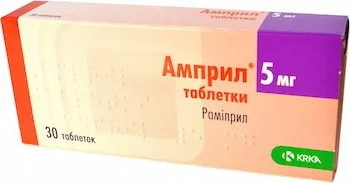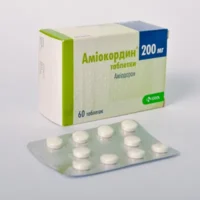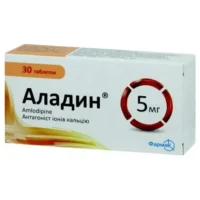Description
Ampril (Ramipril) Tablets 5 mg. №30
Ingredients
Active ingredient: Ramipril 5 mg per tablet.
Dosage
Dosage: The usual dose of Ampril (Ramipril) is 2.5 mg to 20 mg per day, depending on the condition being treated. It is typically taken once a day.
Indications
Indications: Ampril (Ramipril) is indicated for the treatment of hypertension, heart failure, and to improve survival after a heart attack.
Contraindications
Contraindications: Do not use Ampril (Ramipril) if you are pregnant, have a history of angioedema related to previous treatment with ACE inhibitors, or have severe kidney disease.
Directions
Directions: Take Ampril (Ramipril) exactly as prescribed by your healthcare provider. Swallow the tablet whole with a glass of water.
Scientific Evidence
Ramipril, the active ingredient in Ampril tablets, is an ACE inhibitor that works by relaxing blood vessels, which helps to lower blood pressure and reduce the workload on the heart. Several studies have demonstrated the efficacy of ramipril in the treatment of hypertension and heart failure. For example, the HOPE (Heart Outcomes Prevention Evaluation) study showed that ramipril reduced the risk of cardiovascular events in high-risk patients.
Additional Information
It is important to regularly monitor blood pressure and kidney function while taking Ampril (Ramipril). Some common side effects may include dizziness, cough, and elevated potassium levels. If you experience any severe side effects, contact your healthcare provider immediately.
Pharmacological Effects
Ramipril inhibits the angiotensin-converting enzyme (ACE), which is involved in the production of angiotensin II, a potent vasoconstrictor. By blocking ACE, ramipril reduces the production of angiotensin II, leading to vasodilation and decreased blood pressure. This mechanism of action also helps to protect the heart and improve outcomes in patients with heart failure.
Clinical Trials and Comparative Effectiveness
Clinical trials have shown that ramipril is effective in reducing the risk of cardiovascular events and improving outcomes in patients with heart failure. Compared to other ACE inhibitors, ramipril has been found to have similar efficacy but may have a lower risk of certain side effects. However, individual responses to different ACE inhibitors may vary, and the choice of medication should be based on individual patient characteristics and preferences.





